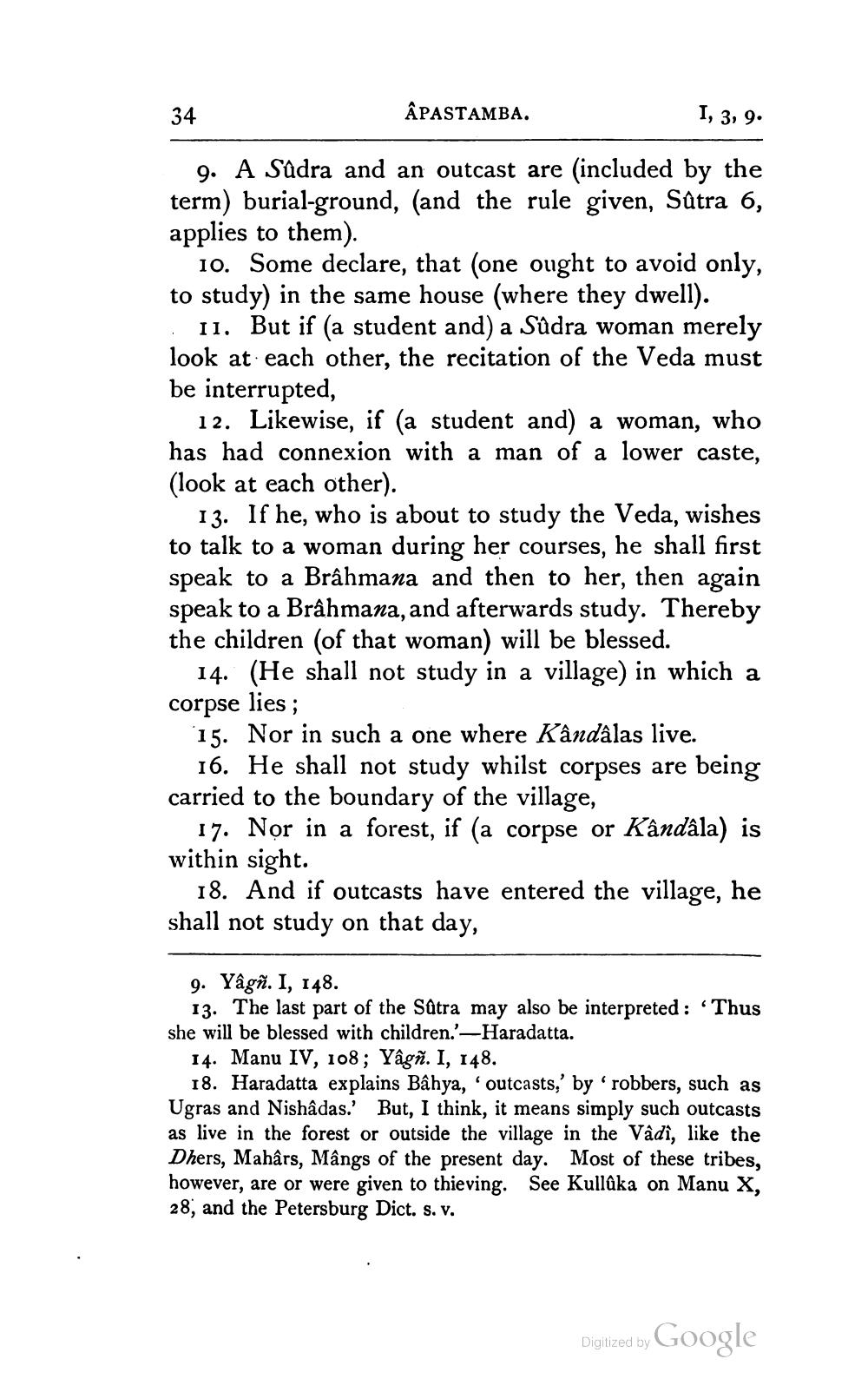________________
ÂPASTAMBA.
I, 3, 9.
9. A Sûdra and an outcast are (included by the term) burial-ground, (and the rule given, Sûtra 6, applies to them).
10. Some declare, that (one ought to avoid only, to study) in the same house (where they dwell).
11. But if (a student and) a Sûdra woman merely look at each other, the recitation of the Veda must be interrupted,
34
12. Likewise, if (a student and) a woman, who has had connexion with a man of a lower caste, (look at each other).
13. If he, who is about to study the Veda, wishes to talk to a woman during her courses, he shall first speak to a Brahmana and then to her, then again speak to a Brahmana, and afterwards study. Thereby the children (of that woman) will be blessed.
14. (He shall not study in a village) in which a corpse lies;
15. Nor in such a one where Kândâlas live.
16. He shall not study whilst corpses are being carried to the boundary of the village,
17. Nor in a forest, if (a corpse or Kândâla) is within sight.
18. And if outcasts have entered the village, he shall not study on that day,
9. Yâgn. I, 148.
13. The last part of the Sûtra may also be interpreted: "Thus she will be blessed with children.'-Haradatta.
14. Manu IV, 108; Yâgñ. I, 148.
18. Haradatta explains Bâhya, 'outcasts,' by 'robbers, such as Ugras and Nishâdas.' But, I think, it means simply such outcasts as live in the forest or outside the village in the Vâdî, like the Dhers, Mahârs, Mângs of the present day. Most of these tribes, however, are or were given to thieving. See Kullûka on Manu X, 28, and the Petersburg Dict. s. v.
Google
Digitized by




